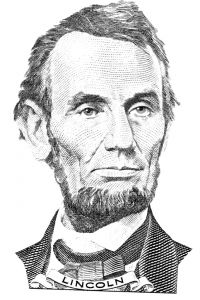 The U.S. recently marked the 150-year anniversary of the assassination of President Abraham Lincoln. CBS News covered the occasion with an essay focused on Lincoln's funeral train and the account of that long and emotional journey by author Robert Reed. While thousands of mourners visited the body as it lay in state, millions of Americans witnessed the lighted train car with the casket as it crawled from the Capitol to Lincoln's childhood home in Springfield, Illinois. Blacks and whites stood together to see the casket, although, as the report says, they did not necessarily do so with ease. At many of the more populated stops, African-Americans waited for their turn to say goodbye at the back of the line. Stops included:
The U.S. recently marked the 150-year anniversary of the assassination of President Abraham Lincoln. CBS News covered the occasion with an essay focused on Lincoln's funeral train and the account of that long and emotional journey by author Robert Reed. While thousands of mourners visited the body as it lay in state, millions of Americans witnessed the lighted train car with the casket as it crawled from the Capitol to Lincoln's childhood home in Springfield, Illinois. Blacks and whites stood together to see the casket, although, as the report says, they did not necessarily do so with ease. At many of the more populated stops, African-Americans waited for their turn to say goodbye at the back of the line. Stops included:
- State capitals
- Major cities such as Philadelphia, Cleveland, Chicago and New York
- Smaller villages along the route
The train avoided places where Confederate sympathies may have threatened disruption.
An Arduous Journey
As Reed points out, there were no superhighways 150 years ago. In fact, after the Civil War, there were very few navigable roadways leading to the tracks along which Lincoln's procession travelled. People travelled for days by wagon, horseback and even by foot to catch a glimpse of the president. All told, the funeral procession covered 1,700 miles. The trip took 13 days and passed through over 400 cities and towns, stopping in many of them. Lincoln's body was accompanied by that of his son, Willie, who died of typhoid at age 11 in 1862. Each time the train stopped, the president's casket was taken out of the car and set up so people could walk by it and pay their respects. Over 100,000 mourners viewed the casket in New York City. Reed writes that people often sang hymns as the train entered and left a place. One chorus of voices would begin to fade as another rose in the next town. The trip was so long, an embalmer and a funeral director were engaged full time to attempt to keep the body of President Lincoln as fresh as possible throughout, a task that proved daunting and ultimately futile in the unrefrigerated train car.
A Replica in Springfield
A re-enactment of the arrival of the body took place in Springfield this year to honor the memory of Lincoln and to commemorate the grief of a nation. The train car was built from scratch because the original fell into disrepair long ago. After Lincoln's burial on May 4, 1865, the hearse car was sold and eventually burned in a fire. Train enthusiasts undertook the making of the replica with very little to go on in the way of pictures or even descriptions. The original train car was in the middle of construction when the president died. According to Reed, it was intended to be used for official travel, much like Air Force One is today. Still, few photographs and fewer detailed descriptions survived. Much of the renovation was accomplished through painstaking research and educated guesswork. Over two dozen volunteers worked on the hearse car to make it ready for the anniversary. The cost of restoration hovers around $350,000, of which the group has raised a little less than half. Their hope is that a museum will take interest, but thus far none have stepped up. Nevertheless, for these historians, spring may always carry the memory and artifact of America's most epic funeral procession. Walt Whitman perhaps best expressed the sentiments of the Springfield group in his poem, "When Lilacs in the Dooryard Bloom'd":
With the waiting depot, the arriving coffin, and the sombre faces
With dirges through the night, with the thousand voices rising strong and solemn...
With the tolling tolling bells' perpetual clang
Here, coffin that slowly passes
I give you my sprig of lilac.
Add Your Comment